Barcelona , 2003
ANTI_DOG
Performance, 2000 – 2003, fashion demonstrations in Paris, Amsterdam, Madrid, Birmingham, Helsinborg, Barcelona, and Venice, featuring a collection of 25 dresses. The anti_dog collection is made from Teijin Twaron, a dog bite-proof, fire-proof and bullet-proof fabric
BEAUTY DOESN'T HAVE GENDER
Barcelona 2003. 3 minutes. When I left Barcelona 10 years ago, transsexuals were frequent targets of skinhead attacks. Even today, despite their strong identity, they face fear and discrimination. I wanted to portray them as the beautiful people they are—sensual and erotic to both me and men.
The anti_dog brand was created to protect women, especially women of color, in dangerous neighborhoods from skinheads with dogs and other aggressors.
This project originated from Framis's experiences in Berlin. She learned about Marzahn, a district where a woman with dark skin couldn't safely walk alone because racist skinheads with aggressive dogs controlled the streets. She felt compelled to go there, but needed protection against the dogs.
"Immigrant women discuss these issues privately because we feel ashamed of being seen as unwanted," Alicia Framis explains. "Yet we're deeply grateful for the chance to grow in our adopted country. Though not our native soil, we feel more connected to our dreams here than in the countries we left. I'm reluctant to condemn physical and psychological attacks from people I consider fellow inhabitants of my land of dreams and possibilities, but this reality exists beneath our polite exterior.
"Today, 'safety' and 'protection' dominate political and public discourse, but the methods used are concerning. Ubiquitous surveillance cameras meant to protect us instead invade our privacy. This loss of privacy reinforces feelings of insecurity. Video cameras create a closed circuit: fear—watch—no intimacy—fear—watch—no intimacy—fear—watch—no intimacy. Real protection doesn't come from monitoring; monitors merely witness our fear. True safety comes from feeling ownership of your body and mind."
BEAUTY BEATS VIOLENCE
With the anti_dog fashion label, Alicia Framis addressed safety, vulnerability, racism, and violence—pressing global issues—in a refreshingly innovative way.
After extensive research, she and her team discovered the ideal fabric for their garments. Twaron, a Dutch invention, revolutionized protection technology. Five times stronger yet lighter than steel, it's commonly used in bullet and stab-resistant vests. The material's glossy, gold-like appearance provided the exact aesthetic Framis envisioned for her dresses.
Women of mixed race wore these Twaron garments during demonstrations in European cities known for aggression against women of color. The collection expanded with designs tailored to each city's specific needs, created in partnership with local organizations. In Helsingborg, Sweden, for instance, women were campaigning for better lighting in dangerous areas like dimly lit alleys. Framis collaborated with these women and local designers to create light-emitting dresses that increased visibility.
In Paris, a collection inspired by renowned designers like Courrèges, Christian Dior, and Coco Chanel was presented with subtle irony on a catwalk during Fashion Week. In Birmingham, women wearing enormous skirts occupied an entire public square. The statements written on these skirts (such as "This is not your Country") are copyrighted, preventing their public use without facing potential fines.
After appearing in Paris, Amsterdam, Madrid, Helsingborg, Barcelona, and Birmingham, the collection grew to 23 garments with accessories. All pieces were displayed together for the first time in Venice at the anti_dog fitting room.
This "dome" could be sealed to create a fully protected shelter made from five anti_dog dresses.
This work highlights three crucial issues. First, it reveals the futility of our current approach to protection. For safety's sake, we've installed extensive camera networks in public and private spaces, creating either an uncomfortable sense of surveillance or the realization that no one can monitor all this footage, let alone respond in time when needed. Alongside this camera proliferation, we tend to surround ourselves with high fences, essentially building our own prisons. Framis's fashion offers an alternative: maximum individual freedom and both literal and figurative visibility.
Second, the work challenges how we typically protest violence and racism. The aesthetics of demonstrations seem unchanged since people first marched to express disagreement. Framis makes protest both appealing and powerful.
Finally, and perhaps most significantly, Framis brought attention to racism and violence against women at a time when feminism appeared to be fading from prominence in Western society.
The anti_dog demonstration magazine En Garde was included as an insert in N°C Magazine, guest-edited by Hussein Chalayan and published by Artimo.
Text by Lilet Breddels, adapted from We Are The World, the catalogue for the Dutch Pavilion at the 2003 Venice Biennale.
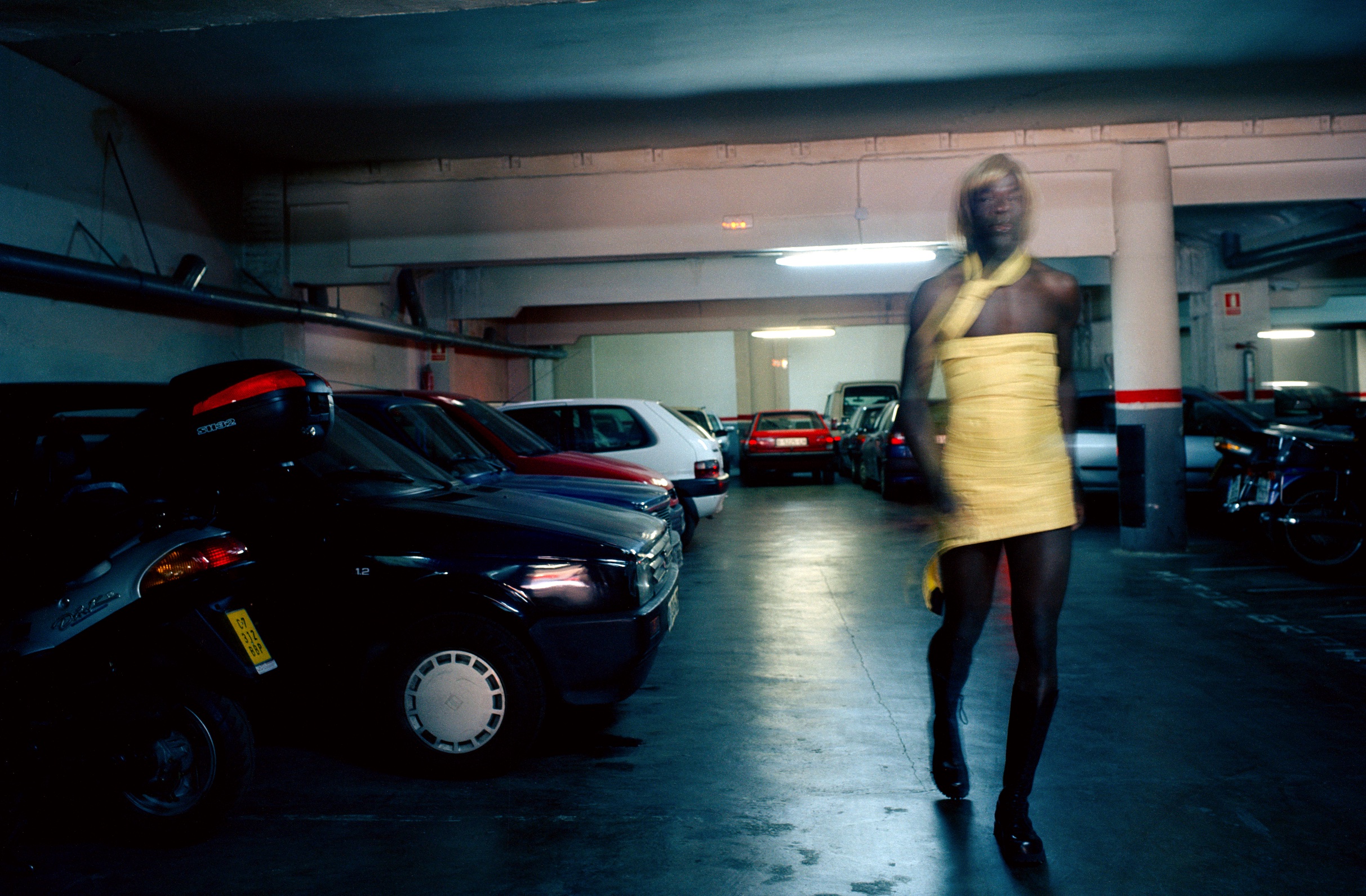
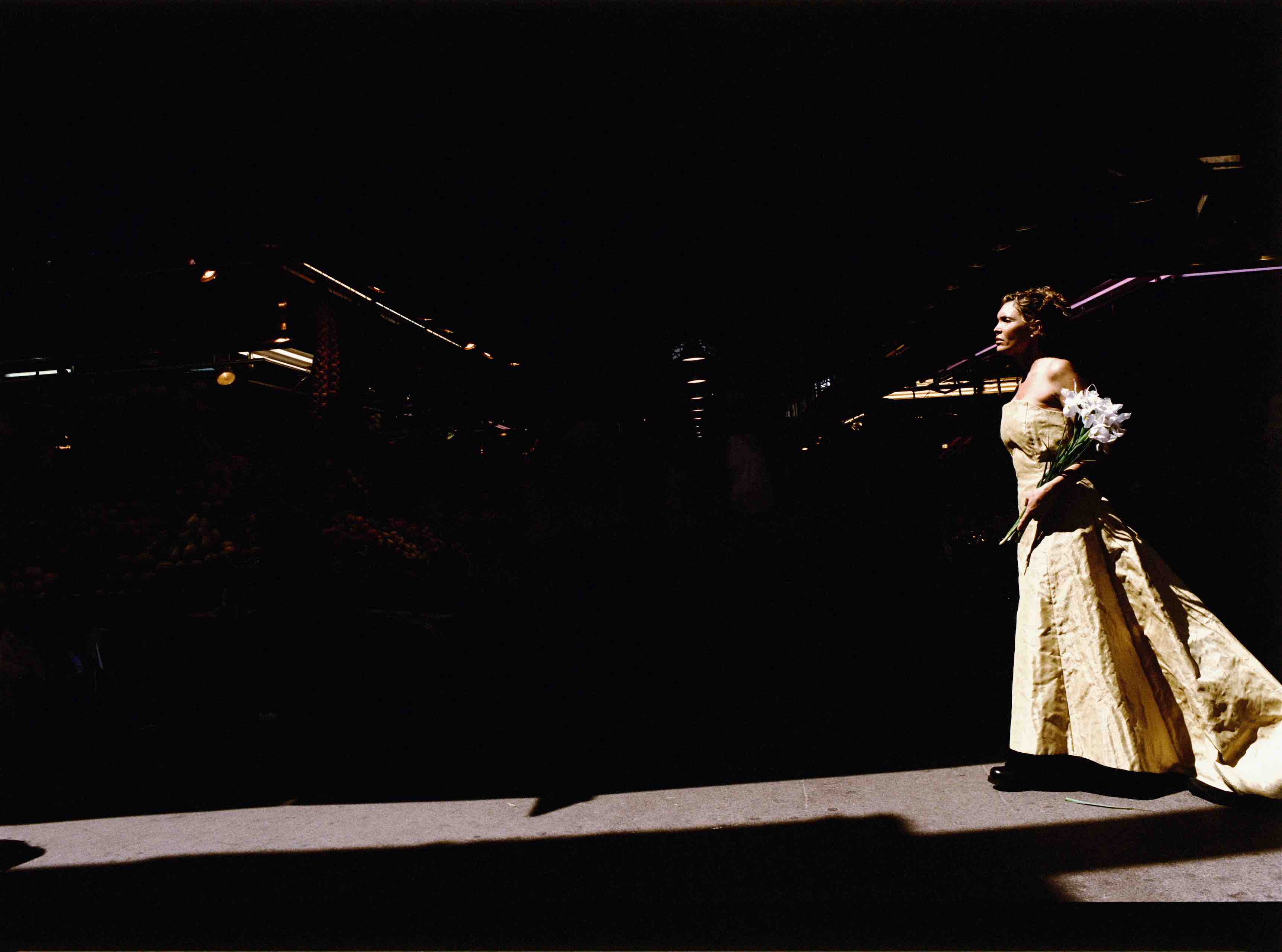
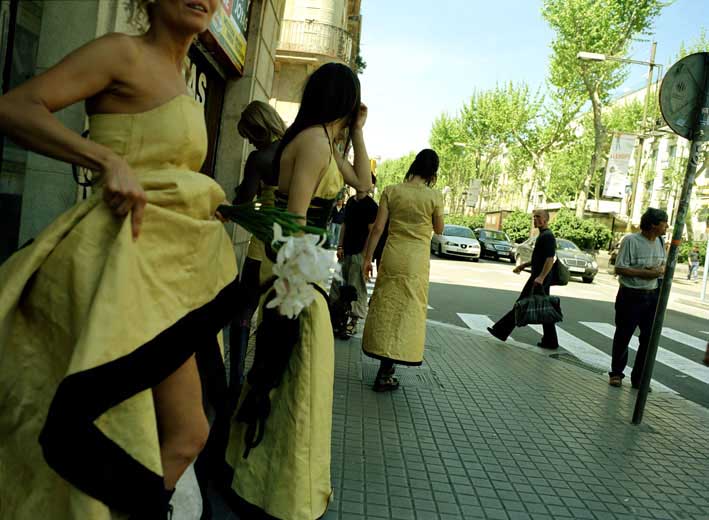
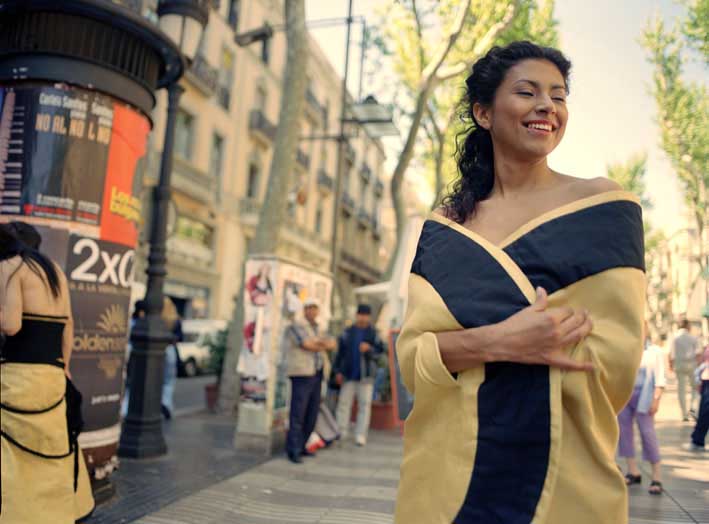
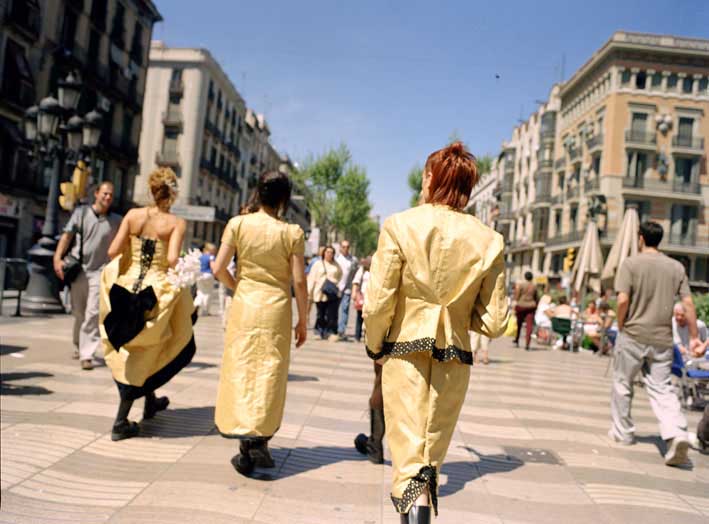
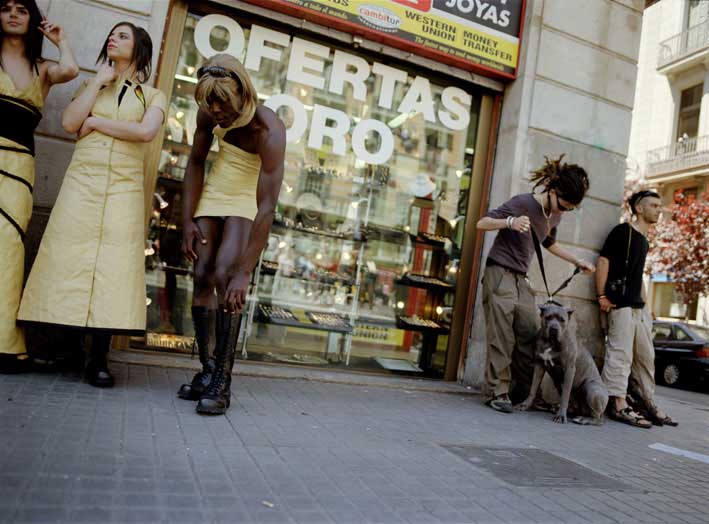
BEAUTY DOESN'T HAVE GENDER
Barcelona 2003. 3 minutes. When I left Barcelona 10 years ago, transsexuals were frequent targets of skinhead attacks. Even today, despite their strong identity, they face fear and discrimination. I wanted to portray them as the beautiful people they are—sensual and erotic to both me and men.
The anti_dog brand was created to protect women, especially women of color, in dangerous neighborhoods from skinheads with dogs and other aggressors.
This project originated from Framis's experiences in Berlin. She learned about Marzahn, a district where a woman with dark skin couldn't safely walk alone because racist skinheads with aggressive dogs controlled the streets. She felt compelled to go there, but needed protection against the dogs.
"Immigrant women discuss these issues privately because we feel ashamed of being seen as unwanted," Alicia Framis explains. "Yet we're deeply grateful for the chance to grow in our adopted country. Though not our native soil, we feel more connected to our dreams here than in the countries we left. I'm reluctant to condemn physical and psychological attacks from people I consider fellow inhabitants of my land of dreams and possibilities, but this reality exists beneath our polite exterior.
"Today, 'safety' and 'protection' dominate political and public discourse, but the methods used are concerning. Ubiquitous surveillance cameras meant to protect us instead invade our privacy. This loss of privacy reinforces feelings of insecurity. Video cameras create a closed circuit: fear—watch—no intimacy—fear—watch—no intimacy—fear—watch—no intimacy. Real protection doesn't come from monitoring; monitors merely witness our fear. True safety comes from feeling ownership of your body and mind."
BEAUTY BEATS VIOLENCE
With the anti_dog fashion label, Alicia Framis addressed safety, vulnerability, racism, and violence—pressing global issues—in a refreshingly innovative way.
After extensive research, she and her team discovered the ideal fabric for their garments. Twaron, a Dutch invention, revolutionized protection technology. Five times stronger yet lighter than steel, it's commonly used in bullet and stab-resistant vests. The material's glossy, gold-like appearance provided the exact aesthetic Framis envisioned for her dresses.
Women of mixed race wore these Twaron garments during demonstrations in European cities known for aggression against women of color. The collection expanded with designs tailored to each city's specific needs, created in partnership with local organizations. In Helsingborg, Sweden, for instance, women were campaigning for better lighting in dangerous areas like dimly lit alleys. Framis collaborated with these women and local designers to create light-emitting dresses that increased visibility.
In Paris, a collection inspired by renowned designers like Courrèges, Christian Dior, and Coco Chanel was presented with subtle irony on a catwalk during Fashion Week. In Birmingham, women wearing enormous skirts occupied an entire public square. The statements written on these skirts (such as "This is not your Country") are copyrighted, preventing their public use without facing potential fines.
After appearing in Paris, Amsterdam, Madrid, Helsingborg, Barcelona, and Birmingham, the collection grew to 23 garments with accessories. All pieces were displayed together for the first time in Venice at the anti_dog fitting room.
This "dome" could be sealed to create a fully protected shelter made from five anti_dog dresses.
This work highlights three crucial issues. First, it reveals the futility of our current approach to protection. For safety's sake, we've installed extensive camera networks in public and private spaces, creating either an uncomfortable sense of surveillance or the realization that no one can monitor all this footage, let alone respond in time when needed. Alongside this camera proliferation, we tend to surround ourselves with high fences, essentially building our own prisons. Framis's fashion offers an alternative: maximum individual freedom and both literal and figurative visibility.
Second, the work challenges how we typically protest violence and racism. The aesthetics of demonstrations seem unchanged since people first marched to express disagreement. Framis makes protest both appealing and powerful.
Finally, and perhaps most significantly, Framis brought attention to racism and violence against women at a time when feminism appeared to be fading from prominence in Western society.
The anti_dog demonstration magazine En Garde was included as an insert in N°C Magazine, guest-edited by Hussein Chalayan and published by Artimo.
Text by Lilet Breddels, adapted from We Are The World, the catalogue for the Dutch Pavilion at the 2003 Venice Biennale.